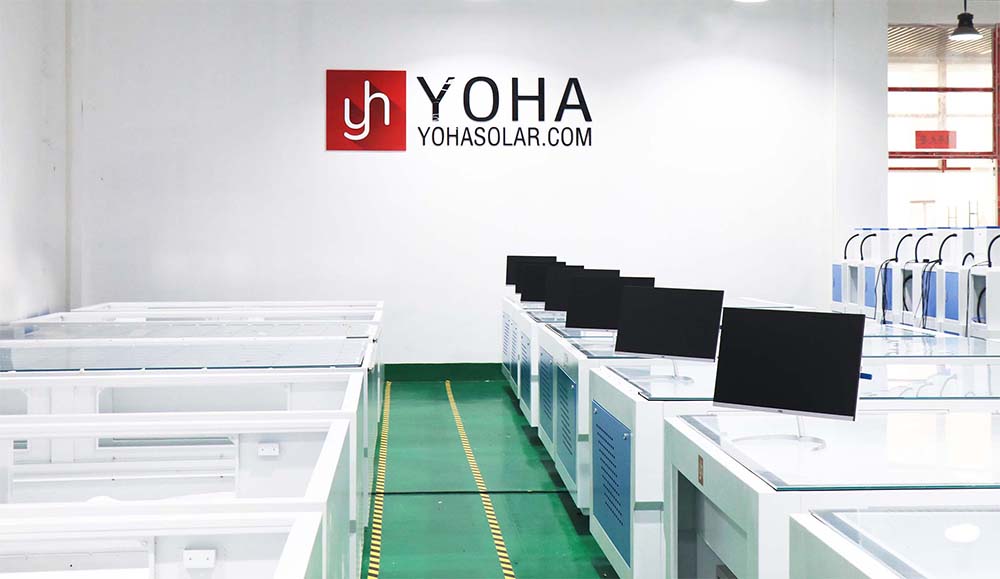Welcome to Wuhan Yoha Solar Technology Co., Ltd!
common problem
Site Map
Language:
 Chinese
Chinese
 English
English
Welcome to Wuhan Yoha Solar Technology Co., Ltd!
common problem
Site Map
Language:
 Chinese
Chinese
 English
English
With the continuous growth in global demand for renewable energy, the solar photovoltaic industry has encountered unprecedented development opportunities. As the core asset of photovoltaic equipment manufacturing enterprises, efficient and reliable production line solutions directly impact market competitiveness and profitability. This article provides a detailed introduction to the 100MW semi-automatic solar module production line solution, offering a comprehensive analysis of this mid-capacity production solution—from design philosophy and process flow to equipment configuration.
The 100MW semi-automatic solar module production line solution is a balanced solution designed for medium-sized photovoltaic manufacturers, with an annual capacity of 100 megawatts, equivalent to approximately 330,000 standard-sized solar modules. The solution adopts a "semi-automatic" design philosophy, achieving automated operations in key processes while retaining necessary manual intervention. This ensures production efficiency while controlling investment costs.
The core value of this solar module production line solution lies in its flexibility—it can adapt to the production requirements of various module specifications, including conventional single-glass modules, double-glass modules, as well as new structures such as half-cut and shingled modules. The production line layout adopts a U-shaped or linear design, which can be adjusted flexibly according to actual factory conditions, with a minimum footprint of about 3,000 square meters.

The 100MW semi-automatic solar module production line solution encompasses the complete manufacturing process, from cell sorting to finished product testing and packaging, divided into six core processes.
Cell Sorting Process: Semi-automatic sorting equipment is used to grade cells through EL testing and electrical performance testing. This solar module production line solution specifically includes a manual re-inspection station to ensure cell quality consistency. Sorted cells are conveyed to the welding process via a conveyor belt.
Welding Process: This is a critical step in solar module production. The solution employs semi-automatic string welding machines, with manual loading/unloading and automatic welding, achieving a welding precision of ±0.5mm. For different cell types (full-cell, half-cut, or shingled), the equipment can quickly switch process parameters. After welding, visual inspection and electrical performance sampling are conducted manually.
Layup Process: Semi-automatic layup stations are used, where operators align cell strings with the assistance of an optical positioning system. Layup accuracy directly affects module power output. This solution combines high-precision positioning systems with manual fine-tuning to ensure layup errors remain within acceptable limits.
Lamination Process: Fully automatic laminators are employed, one of the few fully automated steps in the production line. Parameters such as temperature, pressure, and time can be preset for different encapsulation materials (e.g., EVA, POE). Laminated modules are automatically conveyed to a cooling section to avoid deformation risks from manual handling.
Framing Process: This is another semi-automated step in the solution. Hydraulic framing machines are used with manual assistance for positioning, ensuring high precision and good sealing. For frameless double-glass modules, the solution provides an alternative edge-sealing method to meet diverse production needs.
Testing and Packaging Process: This includes automatic power testers, EL testers, and manual packaging stations. Each module receives complete test data and a unique traceability code, ensuring product quality traceability.
The core advantage of the 100MW semi-automatic solar module production line solution lies in its excellent cost-performance ratio. Compared to fully automated production lines, investment costs can be reduced by 30–40%, while production efficiency remains at about 80% of fully automated lines. This balanced feature makes it particularly suitable for medium-sized photovoltaic enterprises in their growth phase.
Another notable feature of this solution is its flexibility and scalability. The production line equipment adopts a modular design, allowing flexible adjustments to production rhythms based on market demand changes. When capacity needs to be expanded, key equipment can be upgraded by adding workstations or control systems, with maximum scalability up to 150MW.
In terms of quality control, the solution establishes a comprehensive quality management system by setting multiple inspection points at key processes. The semi-automatic design allows experienced operators to promptly identify and correct potential issues. This "human-machine collaboration" quality control model often achieves higher product consistency than full automation.
Energy efficiency is also a key consideration in this solution. All major equipment incorporates energy-saving designs, and with an intelligent energy management system, the overall energy consumption of the production line is about 15% lower than industry averages, further reducing production costs.
Key technical parameters of the 100MW semi-automatic solar module production line solution include: a design cycle time of 120 seconds per module, a daily output of approximately 1,100 modules (based on 24 hours), and an annual effective capacity of 100–110MW. The production line achieves a yield rate of over 98.5%, with module power distribution CV values controlled within 3%.
The solution supports the production of various module specifications, with maximum module dimensions of 2300mm × 1300mm and a minimum thickness of 2.5mm (for double-glass modules). It is compatible with monocrystalline, polycrystalline, and N-type cells, supporting cells up to 210mm in size.
For electrical configuration, the total installed power of the production line is about 450kW, with compressed air consumption of 10m³/min and cooling water circulation of 5m³/h. These parameters provide important guidance for factory facility planning.
The 100MW semi-automatic solar module production line solution represents a pragmatic choice in the current photovoltaic manufacturing sector, particularly suitable for medium-sized manufacturers with limited capital but a focus on stable quality. The solution balances automation levels and investment costs, ensuring product quality while offering favorable economic returns.
As photovoltaic technology continues to advance, solar module production line solutions will also evolve. In the future, this solution can be upgraded by adding intelligent control systems, AI-based quality inspection, and other new technologies, gradually transitioning toward smart manufacturing. For enterprises planning to enter photovoltaic manufacturing or seeking capacity expansion, the 100MW semi-automatic solar module production line solution offers a low-risk, steady-return starting choice.
In the global energy landscape where renewable energy accounts for an increasing share, efficient and reliable solar module production lines will become the core competitiveness of photovoltaic manufacturers. With its excellent adaptability and cost-effectiveness, the 100MW semi-automatic production line solution is emerging as the preferred choice for medium-sized photovoltaic manufacturing projects.
keywords:TOP
18086473422
MESSAGE
